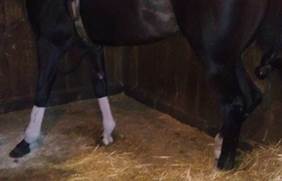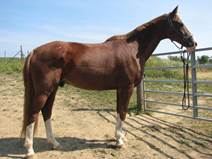We know how important posture is to our own well-being, health, movement over time but we rarely think about our horse’s posture. How your horse stands, carries himself, balances his weight in work and rest and how he re-balances his body when he needs to is just as important. This is what I call equal loading and postural health for your horse.
Notice your horse when he or she is standing at rest in the stall, paddock, run or field. Are they extending one leg? Shifting constantly? Standing wider than normal between the legs? What is your horse telling you? These are just a few of the signs that your horse may be misaligned, out of balance, experiencing numbness or inflammation or pain and is need of some posture and alignment work.
I am not talking about one hind leg cocked when they are dozing, I’m looking into the way weight is distributed between the four posts. I tried to find examples of ways that horses compensate when they are out of alignment, weak, subluxated, sore or in pain. These photos are provided to begin to train your eye for noticing how the horse is choosing to stand rather than standing correctly to distribute the weight load evenly.
This horse is choosing to stay off of his right hind leg probably indicating a sore or painful right stifle joint. Demonstrating weak or tired right hip with weight bearing on right front which is slightly behind the shoulder and left hind leg holding most of the hind quarters weight.

Notice this horse displaying a “tripod” stance with the two front and left hind leg loaded. He clearly is uncomfortable through his spine.

Left hind and right front are supporting most of this horse’s weight.

Weight in left front and right hind. Almost no weight at all in right front. The horse is obviously uncomfortable in some aspect of the right front. His posture and spine are compromised as he stands for long periods.
 Even though this mare was asked to be presented for me to examine, this is the way I would like to see horses stand when they are being groomed, tacked up, washed and waiting to be ridden. If they are trained to stand with equally loaded legs, when they do rest they will only cock a back foot and remain balanced.
Even though this mare was asked to be presented for me to examine, this is the way I would like to see horses stand when they are being groomed, tacked up, washed and waiting to be ridden. If they are trained to stand with equally loaded legs, when they do rest they will only cock a back foot and remain balanced.
Every time you are with your horse make sure they are standing square. You may have to remind them many times (just like you would a teenager) to shift their weight by pressing on either side of the chest causing them to shift and stand. When they are standing correctly, pet them, praise them with your voice then continue with your tasks. After a while you may just have to cluck or say a word of correction and the horse will stand square. This will be a big payoff throughout the horse’s life.
This article was written by Mary D. Midkiff. For more information visit her web site Women and Horses

